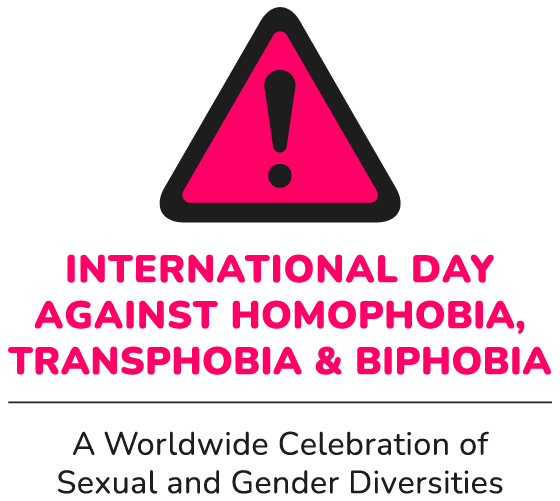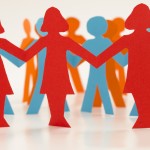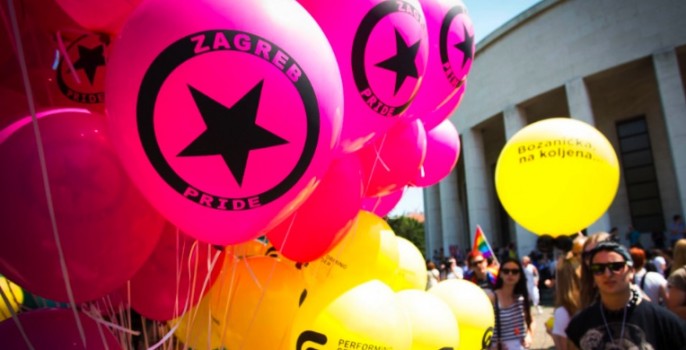What value can the IDAHOT bring to women’s and feminist groups? Why should LGBT groups mobilise around women’s rights & feminist questions? We started to address these questions by drafting some arguments and ideas for action. The upshot, we hope, is to engender (to incite!) broader discussion about the role of feminism in expanding what freedom of sexual and gender expression mean, and to encourage alliance-building around gender and sexual rights questions!
It is a page destined to be regularly updated. Please send your comments or suggestions to contact@dayagainsthomophobia.org
Arguments for Action
For 2014, activists and civil society allies around the world have called for a principal focus on Freedom of Expression in mobilisations around the IDAHOT. Whilst the Day in general is meant to be a vehicle for allies such as women’s and feminist groups, this focus also dovetails considerably with the core demands of many women’s and feminist groups!
Resisting twin assaults on women’s rights and LGBT rights
The right of LGBT communities to Freely Express themselves is an inseparable value of feminism, and is therefore an inevitable agenda among women’s movements. Meanwhile, LGBT groups have a great deal to gain by challenging conservative ideals of ‘natural’ and ‘normal’ (which is also to say, hierarchical) visions of what it ‘takes’ to be a man or a woman.
Heteronormativity – as a prism through which people pass judgement on appropriate behaviour for men and women – plays a defining role in the legitimisation of gender/sexual discrimination and inequality in numerous fields, both at home and in the public sphere. It is one of the most powerful tools for the full control of women’s and LGBT people’s sexualities, bodies, dignity, pleasure and ways of expressing themselves.
For example, international outcry has greeted Russia’s recent assault on LGBT communities’ freedoms of expression and assembly – cloaked in the language of ‘protecting’ children’s rights and ‘traditional values’. Yet LGBT rights activists have often failed to note twin crackdowns on women’s sexual and reproductive rights. Such a shame, since this is adds fuel to the arguments of LGBT activists!
Specifically, despite obvious parallels to the ‘propaganda’ agenda, the passing of legislation restricting the advertising of abortions, in November 2013, went largely unremarked in international media. Even in very well known cases restricting feminist groups’ Freedoms of Expression and Assembly, such as feminist punk/art collective, Pussy Riot, the connections with LGBT questions are frequently missed.
More recently the Ugandan government passed not just the Anti-Homosexuality Bill (which drastically toughens already draconian restrictions on LGBT expression) but – in the same 24 hours – the Anti-Pornography Bill which imposes a dress code for women; outlawing miniskirts and any clothing which exposes parts of the body deemed sexually explicit.
Meanwhile in Armenia, the current gender equality bill is under attack from right-wing interests, attempting to smear it as an entry-door for homosexuality, perversion and family breakdown, etc., often with explicit reference to ‘propaganda’. Attacks on freedoms of sexual and gender expression, here, are clearly – and coercively – intertwined.
And, although the contexts are very different, these projects are being championed by similar sets of actors – representatives of conservative and authoritarian regimes, who frame their assaults on basic human rights as a ‘defensive’ measure designed to guard against ‘Western’ incursions on ‘public morality’.
As the Armenian case demonstrates also, one of the effects here, at times, can be to effectively split LGBT and women’s/feminist energies, marginalize feminist voices and, therefore, to constrict space for the expression of alliances.
Challenging compound inequalities
At the same time compound inequalities, such as the multiple effects of transphobia and sexism in fueling violence against trans women and men – especially trans people of colour, and from the global South – are often missed in international initiatives focused on ‘gender’ or ‘sexuality’ as lenses for interpreting what violence and discrimination are.
Largely tailored to an academic audience, the recent publication of the international ‘Trans-inclusive Feminist Statement’ in September 2013 – signed by over 800 activists, artists, writers, educators, academics and organisations in 41 countries – revealed the depth (and breadth!) of feeling which currently exists to advance a more inclusive vision of what feminism is about, and to openly challenge transphobia within women’s and feminist movement spaces in particular.
New publics are waking up to the insights of intersectional feminist activism!
Celebrating trans inclusion and gender diversity
What is also particularly interesting to see, within emerging transfeminist movements in Europe, North America, Latin America and South Asia, for example, is a clear embrace and extension of many key feminist values: the right to self-determine one’s own identity and expression; the right to bodily autonomy; a commitment to unpacking, challenging and transcending gender norms and hierarchies; an ethics which recognises different dimensions of inequality and human rights as multiple, material and interlocking.
With its long-established focus on mobilising civil society constituencies more broadly, the International Day Against Homophobia & Transphobia can offer a specific entry point for women’s and feminist groups to celebrate trans inclusion and gender diversity within the feminist movement, and/or to create space for dialogue around possibilities for new alliances more broadly.
Promoting lesbian & bisexual women’s rights
In many cultural contexts, lesbian and bisexual women’s groups are also frequently faced with a pincer movement; attempting to raise the profile of homophobia, biphobia and transphobia within mainstream women’s and feminist movements, whilst also trying to promote recognition of gender inequalities and (women’s sexual rights and freedoms) within mainstream LGBT movements.
Consciously or not, many LGBT movements around the world are structured in a heteronormative (and cisnormative) manner. ‘Higher-level’, ‘productive’ and ‘political’ positions and – on the other hand – ‘grass roots’, ‘reproductive’ and ‘social’ tasks remain routinely gendered at the group, movement and international level.
Understanding how sexuality plays a role in violence against women
When organized religions and laws failed in fully locking up women’s sexualities, it is was no coincidence that medicine took over the role. Women who were engaged in relations outside marriages, or dared to get pregnant while doing so, were sent to mental institutions only a few decades ago. They had to be ‘crazy’ to take such actions!
And, efforts to lock up, limit and to ‘correct’ women’s (and everyone’s) Free Expressions of themselves and their sexualities are still in action today; often interlocking with horrific forms of sexual violence practiced everyday, all around the world.
Defining the right to sexual pleasure and love as a human right
When the world looks like a battle field, it seems almost impossible to imagine women enjoying themselves.
The agenda of the global women’s movement is occupied with advocating for lives that are being lost every day in hate fueled murders, protesting against rape and sexual assaults that impact brutally on the social and mental health of numerous women, and challenging lack of access to justice, employment, economic and political equality.
But in all that, it is important to remember that pleasure and desire are also a part of how we get beyond victimhood and painful stories. By challenging the forms of sexuality that promote violent masculinities, it may be possible to imagine sexual rights that are based on sexual equality.
We have to remember that our bodies are not only to be protected but also cherished and flourished and they come with joy and desires!
All around the world, people everyday rise to show this and to challenge the inequalities that bind us all – women, men and gender non-conforming people, LGBTI, queer, questioning or straight, people of all different nationalities, cultures, ethnicities and class backgrounds – and women’s and feminist groups are so often at the heart of driving forward this agenda!
With it’s clear focus on sexuality and sexual rights, and – this year – on Freedom of Expression (which obviously includes Freedom of Gender and Sexual Expression!), the IDAHOT can offer a useful opportunity for extending cross-cutting actions which open a platform for a wealth of debates among concerned groups.
Take Action!
- The IDAHO Committee, in connection with leading organisations in the field of freedom of expression and human rights, will be launching a Global Call, on April 17, to Leaders of the World to respect freedom of expression for all! We are already accepting endorsements of this statement – email us for more details at contact@dayagainsthomophobia.org
- Specific ideas for actions around May 17 – for all those wishing to take action around the day – are now being constantly updated here.
- Various ideas are tailored specifically with women’s & feminist groups in mind, and also with the idea of encouraging LGBT groups to address conduct gender equality friendly and gender challenging (!) activities!
- In an overlapping initiative, many activists around the world are already heading to create ‘Free Expression Zones’ which push back the boundaries of hate and repression against LGBT people worldwide, and provoke debate about wider democratic freedoms for all! You can find out more here.
Further resources:
For more background information (and ideas) on the Freedom of Expression call see also this link.
For more information about this, or for suggestions on ideas and resources to include please email us at contact@dayagainsthomophobia.org. We would love to hear from you !


